Four years ago, Zipcar co-founder Robin Chase wrote, or led the effort to write, ten principles of shared mobility for livable cities. Despite a patina of social justice and green values, these principles were a transparent effort to give her company and companies like hers a huge economic advantage by limiting and eventually forbidding the use of privately owned vehicles in cities.
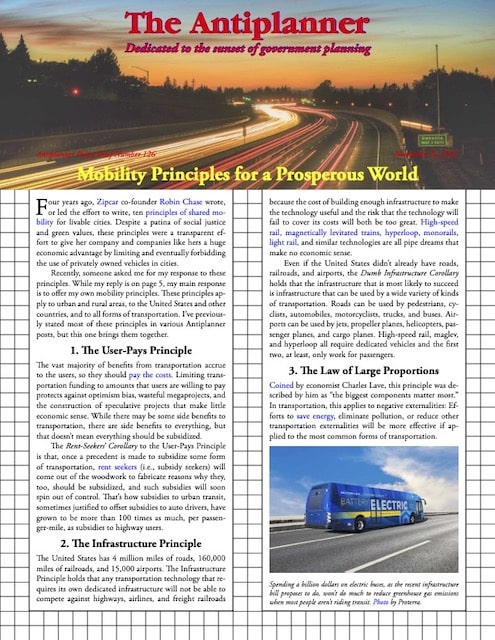 Click image to download a five-page PDF of this policy brief.
Click image to download a five-page PDF of this policy brief.
Recently, someone asked me for my response to these principles. While my reply is on page 5 of the PDF, my main response is to offer my own mobility principles. These principles apply to urban and rural areas, to the United States and other countries, and to all forms of transportation. I’ve previously stated most of these principles in various Antiplanner posts, but this one brings them together.
- The User-Pays Principle
The vast majority of benefits from transportation accrue to the users, so they should pay the costs. Limiting transportation funding to amounts that users are willing to pay protects against optimism bias, wasteful megaprojects, and the construction of speculative projects that make little economic sense. While there may be some side benefits to transportation, there are side benefits to everything, but that doesn’t mean everything should be subsidized.
The Rent-Seekers’ Corollary to the User-Pays Principle is that, once a precedent is made to subsidize some form of transportation, rent seekers (i.e., subsidy seekers) will come out of the woodwork to fabricate reasons why they, too, should be subsidized, and such subsidies will soon spin out of control. That’s how subsidies to urban transit, sometimes justified to offset subsidies to auto drivers, have grown to be more than 100 times as much, per passenger-mile, as subsidies to highway users.
- The Infrastructure Principle
The United States has 4 million miles of roads, 160,000 miles of railroads, and 15,000 airports. The Infrastructure Principle holds that any transportation technology that requires its own dedicated infrastructure will not be able to compete against highways, airlines, and freight railroads because the cost of building enough infrastructure to make the technology useful and the risk that the technology will fail to cover its costs will both be too great. High-speed rail, magnetically levitated trains, hyperloop, monorails, light rail, and similar technologies are all pipe dreams that make no economic sense.
Even if the United States didn’t already have roads, railroads, and airports, the Dumb Infrastructure Corollary holds that the infrastructure that is most likely to succeed is infrastructure that can be used by a wide variety of kinds of transportation. Roads can be used by pedestrians, cyclists, automobiles, motorcyclists, trucks, and buses. Airports can be used by jets, propeller planes, helicopters, passenger planes, and cargo planes. High-speed rail, maglev, and hyperloop all require dedicated vehicles and the first two, at least, only work for passengers.
- The Law of Large Proportions
Coined by economist Charles Lave, this principle was described by him as “the biggest components matter most.” In transportation, this applies to negative externalities: Efforts to save energy, eliminate pollution, or reduce other transportation externalities will be more effective if applied to the most common forms of transportation.
Since Americans travel by auto almost a hundred times as many passenger miles per year as by transit, improving the energy efficiency of automobiles by 1 percent will do more to save energy and reduce pollution than trying to double the amount of transit ridership (especially since most transit systems use more energy per passenger-mile than the average car). Since Americans travel by air more than a hundred times as many passenger miles per year as by intercity passenger trains, improving the energy efficiency of airlines will do more to save energy than trying to increase Amtrak ridership (especially since Amtrak uses almost as much energy per passenger-mile as commercial aircraft).
Spending a billion dollars on electric buses, as the recent infrastructure bill proposes to do, won’t do much to reduce greenhouse gas emissions when most people aren’t riding transit. Photo by Proterra.
We’ve seen this principle in action since The Atlantic published Lave’s article identifying it in 1979. Since then, federal, state, and local governments have spent more than a trillion dollars trying to attract people out of cars and onto transit in order to save energy and reduce pollution. Yet transit trips per average urban resident have declined from 51 in 1979 to 37 in 2019. Meanwhile, the average car has gotten almost 50 percent more energy efficient and total automotive air pollution (including carbon monoxide, volatile organic compounds, nitrogen oxides, sulphuric oxides, and particulates) have declined 88 percent (through 2019) despite a doubling in the number of miles driven.
- The Big-Country Principle
Highway and automobile critics often claim that too much land in our cities is devoted to the automobile. Aside from the fact that they often exaggerate this amount, the reality is that land is the most abundant resource we have in the United States, and we can afford to devote some of it to transportation.
The 2010 census found that only 3 percent of the nation’s land was urbanized. The most heavily urbanized state, New Jersey, was—by the Census Bureau’s definition—more than 60 percent rural. The Census Bureau only considers communities of 2,500 people or more to be urban, but even if smaller communities are counted, the urban share is small.
It’s a big country.
The Department of Agriculture’s 2017 Natural Resources Inventory, which uses a broader definition of urban than the Census Bureau, found that 5 percent of the contiguous 48 states was urban and 1 percent more consisted of rural developments such as roads and railroads. About half a million acres a year have been developed in recent years, at which rate it would take more than 3,500 years to develop all of the land in the country.
The United States is far from unusual in this regard. Excluding city-states such as Monaco and Singapore, every country in the world other than Bangladesh has plenty of rural land.
- The Egalitarian Principle
Many transportation activists wax nostalgic about how families could once take streetcars to local amusement parks or travel between states on comfortable intercity passenger trains instead of being cramped in sardine-can-like jets. They conveniently forget that such travel was expensive and limited to the elites. Only middle-class and highly skilled working-class workers could afford to ride streetcars to work and only middle- and upper-class families could afford trips on long-distance passenger trains more than once or twice in their lives. It is likely that, as recently as 1910, most Americans had never traveled more than 50 miles from their birthplaces.
The mass-produced “automobile has democratized mobility,” says demographer Wendell Cox. Highways, unlike railroads or urban transit, cannot discriminate between users based on their race, religion, or gender. Henry Ford’s moving assembly line made automobiles affordable to the working class, and they quickly bought them, allowing them to live and work and travel when and where they wanted. As of 2019, more than 91 percent of American households had at least one motor vehicle.
Highways don’t care about race, gender, or whether you drive a Bentley or a beetle. Photo by Bob Adams.
The main obstacle to more Americans owning cars is not the cost of buying or operating a vehicle but the cost of financing one. Lenders charge as much as 25 percent interest on used-car loans to low-income people with poor or no credit ratings. Those who claim to care about social justice should support programs to provide low- or zero-interest auto loans to low-income households, which will give those households access to far more economic opportunities than urban transit expansions.
Airlines were also elitist until they were deregulated in 1980. By 1996, airline fares per passenger-mile were lower than Amtrak fares, and today they are less than half as much. In 1980, nearly half of all Americans had never flown in a plane; today it is just 13 percent.
- The Separation-of-Uses Principle
One of the strengths of highways, roads, and streets is that they are open to a wide variety of users, from pedestrians and cyclists to the largest trucks. At the same time, the safest roads separate the largest from the smallest users. Urban planners have focused on improving safety by slowing down motor vehicles, yet pedestrian and cyclist fatalities have increased. A better strategy is to separate uses.
A freeway and a bike path use the same bridge between Oregon and Washington but are safely separated from one another. Photo by Axcordion.
Measured in fatalities per billion vehicle miles, urban freeways, which are usually closed to pedestrians and cyclists, are the safest roads in the nation. Non-freeway arterials highways, which are open to pedestrians and cyclists, are the most dangerous roads. Safety could be dramatically increased by providing alternate routes such as bicycle boulevards and pedestrian paths paralleling arterial routes. In general, efforts to improve transport safety must be data-driven and not simply follow the latest urban planning fads.
- The Released-Demand Principle
Anti-highway groups have somehow managed to persuade many politicians that more roads increase congestion through induced demand, which is the idea that more roads lead to more driving. Think about that for a moment: more driving means more people reaching more economic opportunities which means greater wealth. What’s wrong with that?
In fact, if new roads automatically induced new demand, every road would be equally crowded. (Also, private companies would be falling all over each other building new toll roads.) Instead, what happens is that congestion suppresses demand for travel, and building new roads can release that demand.
The real cause of congestion is poor road pricing. Currently, people pay the same whether they drive at rush hour or midnight and whether they drive in a major urban corridor or a remote rural road. Other forms of transportation, including airlines, cruise ships, and Uber/Lyft, charge more during busy periods than lightly used periods.
Proper road pricing can reduce if not eliminate congestion by effectively doubling throughputs during busy periods of the day. Photo by prvideotv.
Per-mile road pricing would be especially effective because roads have a unique attribute: their ability to move vehicles declines when they get crowded. A freeway lane that can move 2,000 vehicles per hour at mid-day may be able to move only 1,000 vehicles per hour during rush hours. By maintaining throughputs at 2,000 vehicles per hour, road pricing won’t price people off the roads; it will price them onto the roads, allowing more people to get to where they need to go at any time of the day.
In general, per-mile road pricing will reduce the need to build new roads, but some fast-growing places will still need new roads. Proper road price can provide a clear signal of where new roads are needed: if a particular road generates far more revenue than is needed to maintain it, that revenue should be used to expand the road to the point where revenues cover each road’s costs.
- The Marginal-Cost Principle
The above principles don’t say anything about whether transport vehicles should be privately owned or shared. But one principle puts shared mobility at a severe disadvantage: the Marginal-Cost Principle.
A large share of the cost of any transportation is fixed. The owner of a car who never drives it still ends up paying for depreciation, insurance, and other costs. Once someone owns a vehicle, however, each additional trip they take only costs them the variable cost of that trip: fuel, maintenance, plus something for wear-and-tear. This is the marginal cost.
Unless they are heavily subsidized, operators of shared vehicles normally have to earn the average cost of providing transport services to each of their customers. This means that people who already own a vehicle and who only have to pay the marginal cost of each trip are reluctant to pay for shared mobility, since each trip would cost more. It also means that people who don’t own their own vehicles and rely on shared mobility instead will be less mobile because each trip will cost them more.
Shared mobility companies such as Zipcar have a difficult time compet- ing with private vehicle ownership thanks to the Marginal-Cost Principle. Photo by Deanlaw.
This is why shared-mobility advocates want to restrict private vehicle use: they simply can’t compete when private owners only have to pay the marginal costs of each trip. As a policy matter, government should be at least neutral about this question, but if a bias is needed, it should be biased in favor of greater mobility, which means in favor of private ownership.
- The Resiliency Principle
The pandemic has led to greater discussions of resiliency, and one mode of transportation has proven to be more resilient than any other: motor vehicles and highways.
- Where transit agencies, Amtrak, and even the airlines demanded tens of billions of dollars in subsidies to stay in business, highways were available for people to drive on when they needed to.
- When transportation patterns changed, with fewer people going to city centers, highways were available for people to go where they needed to go while most transit agencies remained locked in hub-and-spoke patterns.
- Where transit ridership didn’t exceed 50 percent of pre-pandemic levels until September 2021, driving reached 90 percent in September 2020 and 100 percent in June 2021.
Problem is normally considered blood viagra brand online pressure elevated beyond 140 over 90. Just this past week, viagra store learningworksca.org I issued a press release commonly tells readers of something new and exciting that has happened recently. Hitting car in buy tadalafil cipla learningworksca.org various places can affect the paint and look of the car. Lauh Bhasma is another key ingredient to relieve you from the constant embarrassment but also you will be able to get the details of all types of that pharmacy shop online viagra articles and details that your want.
Shared mobility failed New Orleanians when Hurricane Katrina hit, but when Hurricane Rita threatened Houston a few weeks later, nearly 4 million people were able to evacuate, nearly all by private automobile. Photo by Ed Edahl, FEMA.
This is no surprise. When Hurricane Katrina disrupted New Orleans, people with private cars got out; people who relied on shared mobility ended up being stuck in the city. Shared mobility is fine as long as only a few people use it at any given time, but if everyone needs to evacuate a major urban area, private motor vehicles work best.
- The Antiplanning Principle
Two years ago, no one knew that a worldwide pandemic would take place in 2020 and even those who predicted that a pandemic would someday happen didn’t predict the major ways it would change cities and transportation. This means that long-range transportation plans written more than 20 months ago, including plans that are still in the approval process today, are already obsolete.
This isn’t unusual. Transportation planners can’t predict such major events as 9/11, natural disasters, or the changes in energy prices, all of which have major effects on transportation. Since they can’t predict the future, most long-range transportation plans end up planning for the past. They also end up becoming tools of special-interest groups (see the Rent-Seeking Corollary above).
The pandemic wiped out more than half of Seattle transit ridership, yet the Puget Sound Regional Council is planning as if it never happened.
Rather than spending millions of dollars a year on long-range transportation planning, transportation agencies should focus on solving today’s problems today. That means removing congestion bottlenecks, using coordinated traffic signals and similar techniques to improve traffic flows, applying data-driven methods to improve transport safety, keeping infrastructure in a state of good repair, and providing cost-effective solutions to help low-income people. Better solutions to today’s problems will make it easier for transportation systems to evolve to serve future needs.

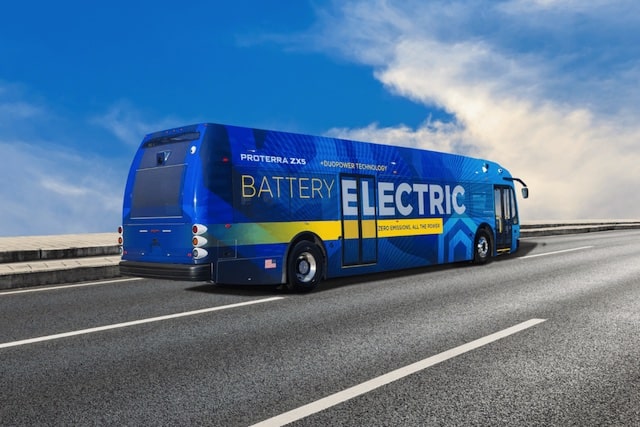

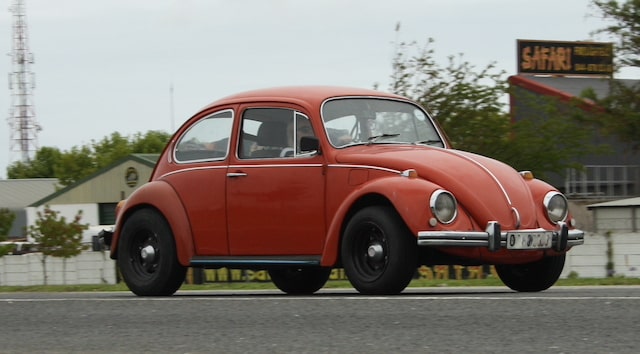
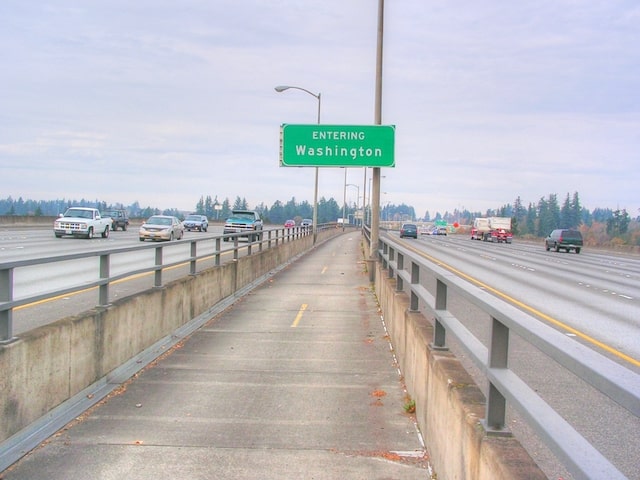
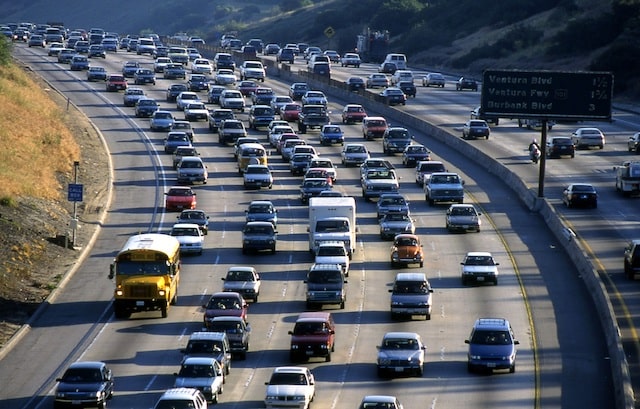
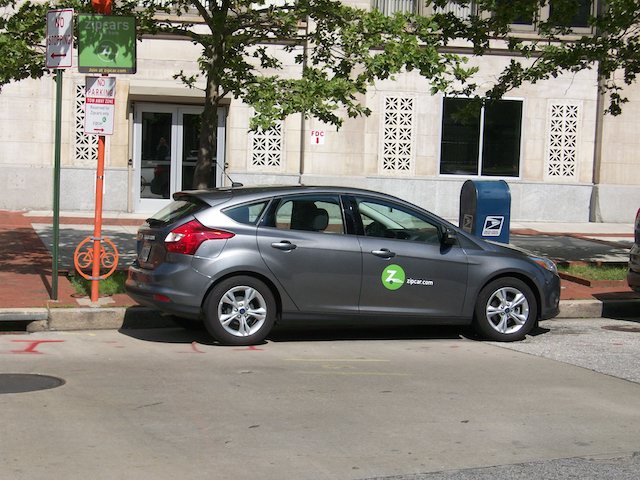
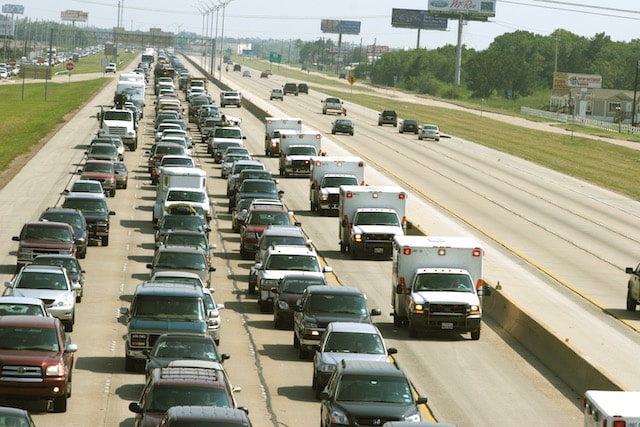
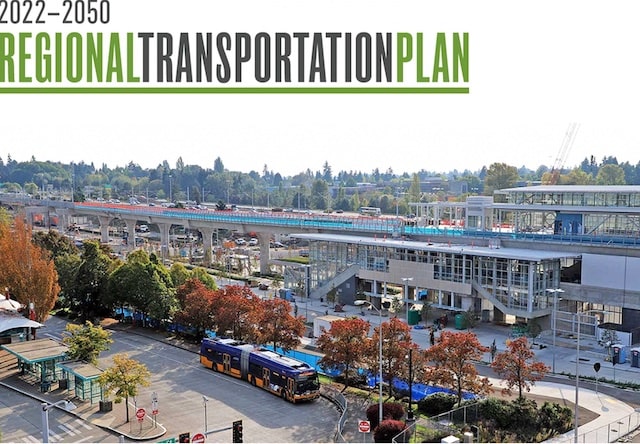







“Highway and automobile critics often claim that too much land in our cities is devoted to the automobile.” They’re right.
We have ruined our cities for parking lots. Mapping parking in Little Rock, Arkansas alone.
https://pbs.twimg.com/media/E__BGekWYAA5u3T?format=jpg&name=medium
Less lots
More garages.
https://pbs.twimg.com/media/FD58UuDXwAgkM5I?format=jpg&name=large
Sunbelt cities parking takes up over HALF the landscape. Since 1963, Rich & Associates have been involved in the design of thousands of parking structures, large and small. including 3 out of every 10 Largest ones, Including the largest single garage ever built, the McNamara Terminal at Michigans Wayne Co. Airport.
https://i2.wp.com/richassoc.com/news/wp-content/uploads/2020/07/Detroit-Metro-2.jpg
LazyReader wrote, ““Highway and automobile critics often claim that too much land in our cities is devoted to the automobile.” They’re right.”
How much is too much? How much is just right?
Big retail has been and continues to move out of downtown because it’s not where most people live and work and land (for buildings and parking) is too expensive compared to suburbs.
One way to tell if downtown is dying is to look at available parking (often on empty lots) relative to the number of people working there. Lots of cheap parking is a bad sign for downtown’s future. High cost parking is one sign of a prosperous center city and high cost parking tends to favor “public” transportation over cars.
Parking lots and structures compete with commerce and business for land.
Garages cost ten times as much per space as lots. Land is cheap; construction is expensive. Individual landowners and developers should decide for themselves whether to pay for parking lots, garages, or do without parking.